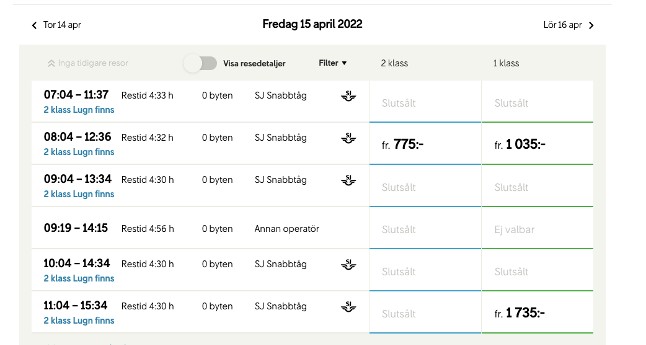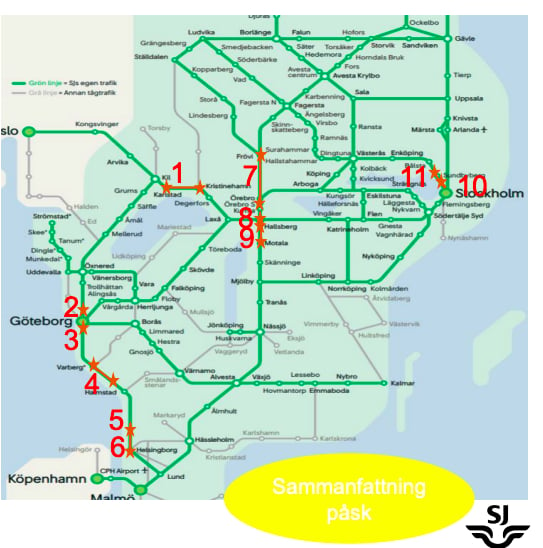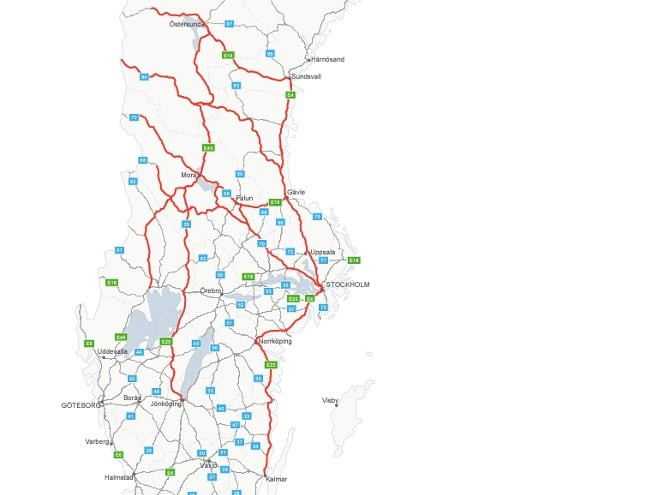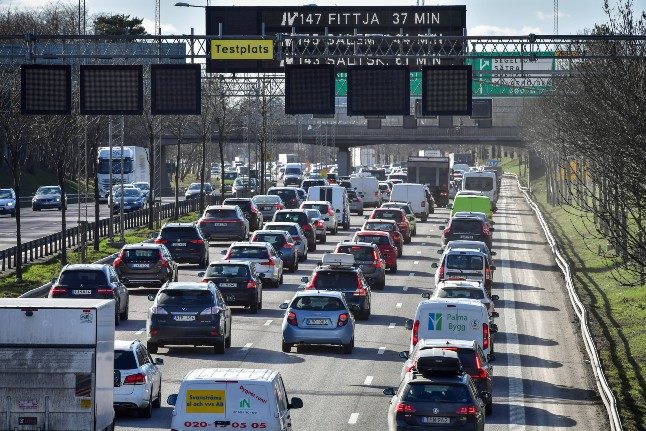Travelling by rail
If you haven’t already booked your ticket, you may find it difficult to get a seat on some popular routes.
“Some routes are already fully booked. This is particularly the case between the major cities,” Anders Edgren, a press officer for the national train company SJ, told state broadcaster SVT.

Sweden’s national rail company SJ often schedules engineering work for national holidays, as fewer people are travelling to work, and this easter there will be engineering work at around 20 sites across the country, meaning more than 1,000 trains will be partly or totally replaced with buses during the Easter break.
The worst areas are on the routes between Gothenburg and Malmö, between Västerås and Stockholm, and between Karlstad and Växjö. Work on the new Västkustbanan will mean replacement buses between Helsingborg and Gothenburg throughout the Easter holidays.
SJ has made a map showing all the routes where you can expect interruptions:

Traffic interruptions over Easter:
Karlstad C to Kristinehamn: 10pm April 14th to 5am April 19th
Gothenburg going north and south: 10.35pm April 14th to 2pm April 18th
Varberg to Heberg: 2pm April 14th to 2pm April 19th 14
Ängelholm Helsingborg: 12am April 4th to April 25th 4.15am
Frövi to Kumla: 10pm April 14th to 5am April 19th
Skymossen to Motala: 12am April 14th to 5am April 19th
Stockholm Central platforms 3 to 7: 10pm April 14th to 10pm April 21st
Huvudsta – Barkarby: 1.10am April 14th to 4.30am April 19th
Travelling by car
In its guide to travelling by car over Easter, the Swedish Transport Agency warns that weather conditions at this time of year can vary enormously as you drive north. You may find, for instance, that you need winter snow tyres by the time you reach your destination, even seemed almost summery when you set out. You should also make sure you have clothing for all seasons.
Here is the agency’s maps of roads which it expects to see heavy Easter traffic.

The E22 between Kalmar and Norrköping, the E4 between Norrköping and Stockholm, and then from Stockholm all the way up to Sundsvall. The roads leading towards the ski areas around Sälen and Östersund also tend to get crowded. None of the roads in Skåne are expected to see heavy traffic.
The Swedish Transport Agency has imposed a ban on overtaking on the E4 between Gävle och Tönnebro, on the 14th and 14th of April for travel in a northerly direction, and on the 17th and 18th of April travelling south.
The agency also recommends choosing roads with central reservations and speed cameras, as these are safer, even if this might mean a slower journey. Here is the agency’s map of roads with central reservations.
Flights
If you’re coming to Sweden by air, you should be aware that companies have been cancelling a high number of flights in recent days, because many of their staff have Covid.
EasyJet and British Airways cancelled more than 80 scheduled flights on Thursday, blaming staff sickness.
Airports
If your flight is running as scheduled, be aware of issues at several UK airports.
Airports including Heathrow, Manchester and Birmingham have been hit by disruption because of staff shortages caused by Covid, affecting everything from airport security to luggage handlers. Passengers risked missing their flights because of lengthy delays, according to reports in the UK press.
Passport queues at Heathrow Terminal 2, from where SAS flies to Stockholm, were ‘stretching to 90 minutes’ on Maundy Thursday, The Independent reported.
Passengers have been advised to make sure they are at the airport as early as possible to allow for delays, and unions have warned that the disruption could last for some time.
In the case of Manchester, the advice last week was to arrive three hours early.



 Please whitelist us to continue reading.
Please whitelist us to continue reading.
Member comments